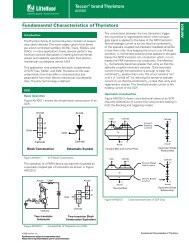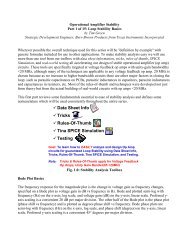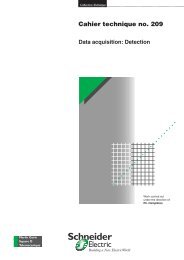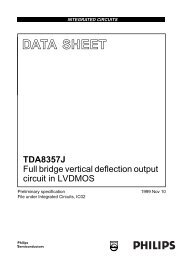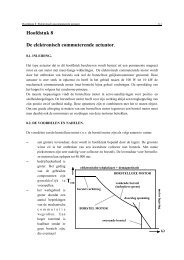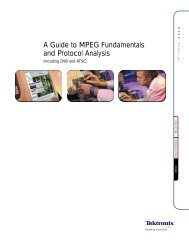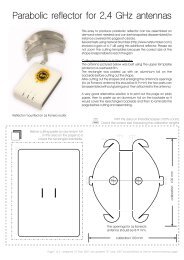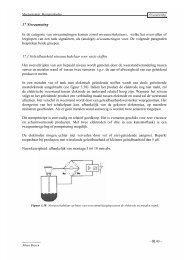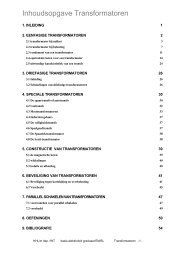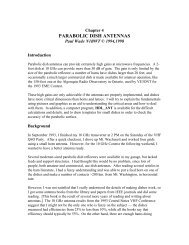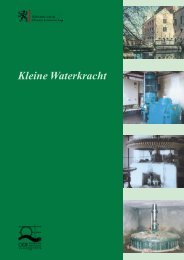9.18 Lightning and surge protection for PV systems and solar ... - Dehn
9.18 Lightning and surge protection for PV systems and solar ... - Dehn
9.18 Lightning and surge protection for PV systems and solar ... - Dehn
Create successful ePaper yourself
Turn your PDF publications into a flip-book with our unique Google optimized e-Paper software.
Furthermore, the d.c. lines entering the <strong>PV</strong> inverter<br />
in the operation building have to be protected<br />
by a suitable spark-gap-based lightning current<br />
arrester, such as DEHNlimit <strong>PV</strong> 1000, a combined<br />
lightning current <strong>and</strong> <strong>surge</strong> arrester.<br />
Surge protective measures in the <strong>PV</strong> array<br />
In order to reduce the load on the isolation inside<br />
the <strong>solar</strong> modules at a lightning strike into the isolated<br />
air-termination system, thermally controlled<br />
<strong>surge</strong> protective devices are installed in a generator<br />
junction box as close as possible to the <strong>PV</strong> generator.<br />
For generator voltages up to 1000 V d.c., a<br />
DEHNguard <strong>PV</strong> 500 SCP type of <strong>surge</strong> protective<br />
device is installed here between plus <strong>and</strong> minus to<br />
earth. In this case <strong>surge</strong> protective devices Type 2<br />
are sufficient because the <strong>PV</strong> modules are within<br />
the protective area of the external lightning <strong>protection</strong>.<br />
In practice, it is a proven method to use <strong>surge</strong> protective<br />
devices with floating contacts to indicate<br />
the operating state of the thermal disconnection<br />
device. Thus, the intervals between the regular onsite<br />
inspections of the <strong>protection</strong> devices are<br />
extended.<br />
The <strong>surge</strong> protective devices in the generator junction<br />
boxes assume the <strong>protection</strong> <strong>for</strong> the <strong>PV</strong> modules<br />
locally <strong>and</strong> ensure that no sparkovers caused<br />
by conducted or field-related interferences come<br />
up at the <strong>PV</strong> modules.<br />
Note<br />
The <strong>surge</strong> <strong>protection</strong> of so-called thin-film module<br />
applications possibly requires separate consideration.<br />
Surge protective measures <strong>for</strong> data processing<br />
<strong>systems</strong><br />
The operation building provides a remote diagnostics<br />
system, which is used <strong>for</strong> a simple <strong>and</strong> quick<br />
function check of the <strong>PV</strong> <strong>systems</strong>. This allows the<br />
operator to recognise <strong>and</strong> remedy malfunctions in<br />
good time. The remote supervisory control system<br />
provides the per<strong>for</strong>mance data of the <strong>PV</strong> generator<br />
constantly in order to optimise the output of<br />
the <strong>PV</strong> system.<br />
As shown in Figure <strong>9.18</strong>.2.3, measurements of<br />
wind velocity, module temperature <strong>and</strong> ambient<br />
temperature are per<strong>for</strong>med via external sensors at<br />
the <strong>PV</strong> system. These measurements can be read<br />
directly from the acquisition unit. The data acquisition<br />
unit provides interfaces like RS 232 or RS 485,<br />
which a PC <strong>and</strong>/or modems are connected to <strong>for</strong><br />
remote enquiry <strong>and</strong> maintenance. Thus, the service<br />
engineers can determine the cause of a malfunction<br />
by telediagnosis <strong>and</strong> then directly eliminate<br />
it. The modem in Figure <strong>9.18</strong>.2.3 is connected<br />
to the network termination unit (NTBA) of an ISDN<br />
basic access.<br />
The measuring sensors <strong>for</strong> wind velocity <strong>and</strong> module<br />
temperature are also installed in the zone protected<br />
against lightning strikes like the <strong>PV</strong> modules.<br />
Thus, no lightning currents come up in the<br />
measuring leads, but probably conducted transient<br />
<strong>surge</strong>s resulting from induction effects in the<br />
event of lightning strikes into the isolated air-termination<br />
system.<br />
In order to provide a reliable trouble-free <strong>and</strong> continuous<br />
transmission of the measured data to the<br />
measuring unit, it is necessary, to lead the sensor<br />
cables entering the building via <strong>surge</strong> protective<br />
devices (Table <strong>9.18</strong>.2.2). When choosing the protective<br />
devices, it has to be ensured that the measurements<br />
cannot be impaired. The <strong>for</strong>warding of<br />
the measured data via the telecommunication network<br />
per ISDN modem must be provided as well, in<br />
order to provide a continuous control <strong>and</strong> optimisation<br />
of the per<strong>for</strong>mance of the installation. For<br />
this purpose, the U k0 interface upstream of the<br />
NTBA which the ISDN modem is connected to, is<br />
protected by a <strong>surge</strong> protective adapter. This<br />
adapter ensures additional <strong>protection</strong> <strong>for</strong> the<br />
230 V power supply of the NTBA.<br />
www.dehn.de LIGHTNING PROTECTION GUIDE 307




